-
New Coast Guard vessel exceeds expectations in rough Alaskan waters
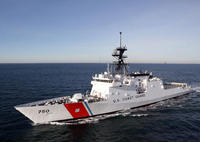
The U.S. Coast Guard’s new line of flagship vessels, the National Security Cutter (NSC), has proven invaluable to the agency’s mission since its deployment in 2009; the vessels’ capabilities reflect the additional responsibilities that the Coast Guard has shouldered since the 9/11 attacks; the new Legend Class National Security Cutters come as the replacement for the Coast Guard’s aging Hamilton Class High Endurance Cutters that have been in operation since the 1950
-
-
China reduces top speed on high-speed rail
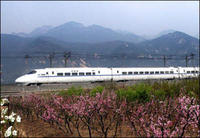
On Monday Chinese officials lowered the top operating speed for its flagship bullet train citing safety concerns; China’s Railway Ministry will now run trains at 155 to 186 miles per hour on the Beijing to Shanghai line instead of 236 miles per hour as was originally planned; the recent announcement comes as part of broader set of changes to the Railway Ministry after Liu Zhijun, the previous minister, was fired for corruption and mismanagement in February
-
-
Airport Checkpoint of the Future unveiled
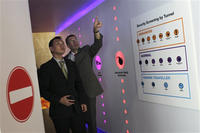
Attendees of the 67th annual Air Transport Association (IATA) annual meeting and World Air Transport Summit in Singapore got a first look at a prototype version of the airport security Checkpoint of the Future; the prototype checkpoint is specifically designed to allow passengers to pass through without having to remove their shoes or get patted down; to make travelling more pleasant and less invasive, the new security checkpoint is outfitted with a suite of sophisticated sensors including eye scanners, x-rays, and metal and liquid detectors
-
-
House representatives battle for control of TSA
Representatives Pete King (R-New York) and John Mica (R-Florida) are battling for control over jurisdiction of the Transportation Security Administration (TSA); currently, King’s Homeland Security Committee oversees TSA as airport security checkpoints are manned by DHS employees — making TSA the only government transportation agency that Mica’s Transportation and Infrastructure Committee does not have jurisdiction over; last week Mica introduced an amendment that could place TSA under his committee’s control by moving to require TSA to hire private contractors to conduct airport screenings, thus removing DHS from the equation — and from King’s jurisdiction
-
-
New detection system uses ultraviolet light to spot explosives
More than 625 million travelers will take to the air before 2011 is over; the passengers’ carry-on luggage and checked baggage are screened for explosives — but University of Florida researchers say there is a better way to do so; the UF scientists say they have developed the first explosive detection system in the world that utilizes ultraviolet light to zero in on specks of dangerous explosives found in and on luggage; the explosives detection market is estimated to exceed $3 billion in the U.S. alone
-
-
Bomb sniffing dogs deployed to Long Island ferry
A New York ferry company has become the first in the United States to receive federal grants to pay for the deployment of explosive detection canine teams; the Bridgeport & Port Jefferson Steamboat Company is teaming up with Long Island K-9 service to use bomb sniffing dogs to detect any explosives aboard the ferries; the canine teams will inspect every car that enters the ferry; teams were initially deployed on 13 May and the contract will last for three years
-
-
CBP Announces New Small Vessel Reporting System

U.S. Customs and Border Protection the other day announced the availability of the Small Vessel Reporting System along the northern border and in Florida, Puerto Rico, and the U.S. Virgin Islands; the system is voluntary, and — as is the case with the air travel’s Trusted Traveler program — it aims to provides expedited entry procedures to trusted boaters; the system is open to all U.S. citizens and permanent residents, as well as Canadian citizens
-
-
Making high-speed rail tracks safer
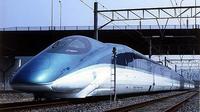
High-speed rail requires prestressed concrete railroad ties, as wooden cross ties are too flexible; for these ties to be effective, prestressing forces must be applied at a considerable distance before the rail load is applied; this is called the transfer length; to resist the heavy impacts the concrete ties utilize about twenty steel wires, each stressed to around 7,000 pounds; if the prestressed force is not properly transferred, failures can occur in the track
-
-
Sector Report for Thursday, 26 May 2011: Transportation Security
This report contains the following stories.
-
-
"See Something, Say Something" campaign hits Seattle ferry system
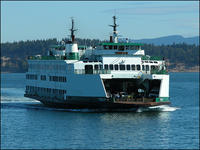
Last week, a senior DHS official examined security measures at the nation’s largest ferry system; Betsy Markey, DHS’s assistant secretary of intergovernmental affairs, rode aboard a ferry last Thursday in Seattle as it sailed from Colman Dock to Bainbridge Island; Markey’s visit comes as a part of a broader DHS push to promote its “If You See Something, Say Something” public awareness campaign; the campaign will be implemented in conjunction with the Washington State Ferries (WSF) system; WSF is the largest and most complex ferry system in the United States with its twenty terminals and nine routes
-
-
Justice Department threatens to cancel flights to Texas
Last week, Texas lawmakers were forced to back away from a bill that would have outlawed airport pat-downs after the U.S. attorney general’s office threatened to cancel flights to Texas; the Texas House passed a bill that would have made it illegal for Transportation Security Administration (TSA) agents from conducting thorough pat downs at airport security checkpoints unless they had probable cause; the U.S. attorney general said that the law would be unconstitutional, and if passed, TSA would be forced to cancel flights to Texas
-
-
47,000 pedestrians killed in last decade
A recent study shows that walking in the United States has become increasingly dangerous; in the last ten years, nearly 50,000 pedestrians were killed and 688,000 injured in accidents; the study, conducted by Transportation For America (TFA), a coalition of transportation, environmental, and business groups, found that four of the top five most dangerous areas for pedestrians were located in Florida; 67 percent of pedestrian fatalities occurred on federal-aid roads, which are eligible for federal funding and have federal guidelines and oversight for their design
-
-
Senators outline long-term transportation spending plan
On Wednesday, a bipartisan group of senators announced that they had come to an agreement on a long-term transportation spending bill; since 2008, highway and transit construction programs have had an uncertain fate, but the proposed bill would allocate roughly $56 billion a year to highway and transit construction; it is unclear what the final bill will look like as the Senate, House, and executive branch each have diverging views on highway funding; funding the transportation bill will be no small feat; a two year Senate bill would require $12 billion in additional fuel tax revenues and a six year bill would require an addition $70 billion
-
-
Boston tries to bar hazmat trucks from downtown -- again
On average, 317 big trucks and tankers carrying hazardous materials travel through downtown Boston every day; in 2006 Boston had barred hazmat trucks from entering downtown, but federal officials voided the restrictions last year, saying Boston did not show sufficient cause to justify the restrictions; the city commissioned a study on the issue, which recommended diverting hazmat traffic from downtown to a route which will see the truck take the already-congested Route 128, which cuts through Boston’s western suburbs; businesses and cities along the proposed rout object
-
-
Ships increasingly turning to armed guards to combat piracy
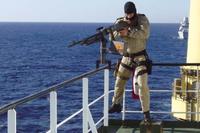
To stem the rapidly growing number of pirate attacks in the Indian Ocean, more shipping companies are turning to armed guards; last year attacks off the Somali coast hit an all-time high with forty-nine ships hijacked along with 1,016 crew members; to combat the growing threat of piracy an estimated 20 percent of ships operating in the Indian Ocean and the Gulf of Aden will hire armed guards within the next eighteen months, up from 12 percent; analysts say no ships have been successfully hijacked when armed guards were present
-
More headlines
The long view
New Technology is Keeping the Skies Safe
DHS S&T Baggage, Cargo, and People Screening (BCP) Program develops state-of-the-art screening solutions to help secure airspace, communities, and borders
